TMJ Treatment – Portland, OR
Relieving Jaw Pain and Correcting Bite Misalignment
The temporomandibular joint (TMJ) is the swivel-hinge connector between the lower jaw (mandible) and the skull. Although it is technically an anatomic description, “TMJ” is also very commonly used to describe the popping, clicking, and pain in the general area.
The lower jaw has two TMJs, one on each side, and because what affects one side also affects the other, they have to operate in perfect harmony. It is, interestingly, the only joint in the body that crosses the midline and is undoubtedly the most complex joint in the body.
The lower jawbone ends within the TMJ with a (normally) blunt, rounded projection called the condyle. Like the knee, it pivots and glides on a thin disk of cartilage called the meniscus, and, also like the knee, if the condyle pops on and off the meniscus, there is a popping and a click and perhaps great pain.
By using non-invasive technologies like sound readings and the tracking of jaw movements, we are able to isolate problems and provide TMJ treatment in Portland by very selectively correcting minute interferences in your chewing motions. Because you cannot treat TMJ problems without very precisely correcting the bite, and you cannot precisely correct the bite without utilizing the use of a computerized bite from the TekScan technologies.
Why Choose Evolution Dental for TMJ Treatment?
- Level 1 Certified Dentist at the Center for Neural Occlusion
- All Treatments Guided by TekScan Technology
- 100% Focused on Treating TMJ & Airway Issues
Dr. Russ Teasdale’s Unmatched Experience & Qualifications
Dr. Russ Teasdale is one of only a handful of dentists internationally to be certified Level 1 at the Center for Neural Occlusion and has been a TekScan user for more than 25 years. His background includes extensive training at the Las Vegas Institute for Advanced Dental Studies, in both restorative and neuromuscular dentistry, orthodontic training through the United States Dental Institute®, Fellowship status with the World Congress of Minimally Invasive Dentistry, and extensive training in the use of clinical dental lasers and CAD/CAM technology.
The Triad of the TMJ
There are three things that affect the TMJs: the joint itself, the muscles that make the lower work, and the teeth that dictate how the muscles pull the jaw. If any one of these factors is out of sync, the whole system can break down.
The joint itself for most people is not the problem, although trauma or years of popping and clicking can lead to the joint becoming non-functional and painful. Micro-surgery is always an option, but it should always be the LAST option because other non-invasive TMJ treatments can usually restore the disk to its proper position.
The muscles will always work to close the mouth so that the greatest number of teeth hit together at the same time. If this motion involves torquing or twisting the jaw within the TMJ, that goal will happen. And it will very likely cause discomfort with the TMJs.
In addition, as we will explain later, how the teeth work together can actually trigger grinding and clenching. And either of these actions can cause lactic acid buildup in the muscles, which, in turn, creates a burning pain. And because a muscle overlies the TMJ, most people will tend to associate the pain with the joint.
And so, of course, the position of the teeth is all-important, as it directs the muscles, and the muscles operate the joints. That is why a lot of TMJ problems occur after orthodontic treatment because not enough attention has been paid to the actual bite, and a bite has been created that is not in harmony with what the body wants.
TMJ Disorder Signs & Indications
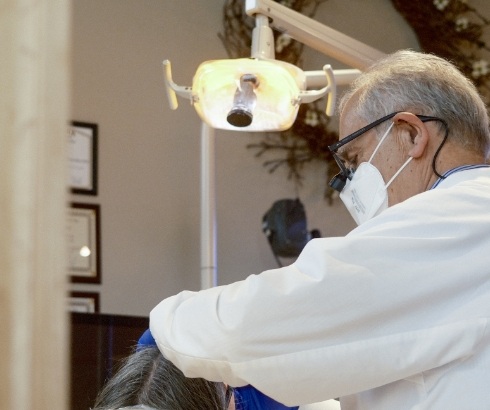
Pain and soreness in and around the jaw are the primary symptoms of TMJ disorder (TMD), but its indications can be far more varied and can go much further than that. Other common signs that point to the need for professional TMJ treatment include:
Headaches & Migraines:
The human body is full of complex interconnections and interactions. It is understandable, then, that when the TMJ is not functioning at its best, the muscle tension around it can cause tension in the surrounding areas. Headaches and migraines commonly result.
Ear & Neck Pain:
TMJ disorder is often a cause of irritation and inflammation in nearby areas, leading to ear pain. And if the lower jaw is held unnaturally back farther than is necessary, dizziness (or vertigo) and/or tinnitus (ringing in the ears) are common symptoms. Neck pain is also common due to descending muscle tension.
Teeth Grinding & Clenching:
The friction caused by a misaligned bite may move you to subconsciously try to compensate for bite problems on your own, subconsciously leading to continuous teeth grinding and clenching. The grinding and clenching, in turn, can exacerbate other TMJ disorder symptoms.
Read on to learn more about how TMJ disorder can cause these issues and what can be done to ease your symptoms.
Headaches & Migraines
Chances are that if you frequently experience headaches or migraines, you have already been offered countless solutions by many different people: friends, family, doctors, and even internet strangers with good intentions. Usually, these suggestions boil down to two main approaches — relaxation and medication. Unfortunately, these options only mask the symptoms and do nothing to alleviate the cause of head pain.
How Headaches & Migraines Can Be Caused By Your Teeth:

Your body is a complex, interconnected system, so issues in one specific area can readily affect other areas in ways that may not always be apparent. In any sequence, every error affects everything downstream, and nothing works well unless everything works well. Think of an assembly line where one part just stops working correctly all of a sudden. Even though every other machine is fine, the once-smooth production process will most likely grind to a halt without warning.
A bad bite can be the underlying malfunction in question for a wide variety of bodily discomfort, including constant headaches and migraines. If the teeth are not in the right position for optimal chewing, the muscles of the jaw force them into position and hold them there. This leads to them overwork, causing a buildup of lactic acid, which is what makes your muscles sore after an intense workout. The jaw muscles work in conjunction with all the muscles of your head and neck, so tension in the jaw can transfer to these muscle groups. The chain reaction started by a crooked bite often results in headaches and migraines that will not go away, and this is because the source of the disharmony—the bad bite—is never directly addressed by the most common TMJ treatments.
How TMJ Treatment for Headache & Migraine Relief Works:

If you are suffering from TMJ-related head pain, correcting your bite is the logical and correct approach. Using a computerized occlusal analysis and electromyography (EMGs), Dr. Russ Teasdale, a highly experienced TMJ dentist in Portland, can measure how your teeth interact as you chew and thus see exactly how this is affecting your jaw muscles. This approach provides precise, objective information, something that cannot be developed by simple "bite paper" and guesswork.
After gathering detailed analytical information, Dr. Teasdale can pinpoint the irregularities and high spots in your bite, so that all adjustments are made in the most efficient and effective manner possible. Disclusion Time Reduction (DTR) guides him to precisely align the bite so that the teeth come together properly and allow your jaw to reach a relaxed, natural resting position. As a result, the jaw muscles work far more efficiently and effectively and do not build up excess lactic acid. The result is greater comfort and the elimination of headaches and migraines.
Ear & Neck Pain
The only thing more frustrating than dealing with persistent ear and/or neck pain is trying to do something about it and not seeing any results, even with the help of trusted professionals. Every year, these issues send millions of Americans to various doctors, chiropractors, masseuses, and more, looking for meaningful relief that lasts. Ultimately, many find themselves back where they started, dealing with daily discomfort. The reason so many people cannot seem to find a solution for their ear and neck pain is because, in many cases, the root of the problem is not found in the ears or neck, but rather the jaw!
The Overlooked Source of Ear & Neck Pain:

If the bite is misaligned for any reason, this causes the muscles to strain whenever the teeth come together because the body is trying to force them into the optimal position for chewing. This leads to them overworking, tiring themselves out, and producing lactic acid. The presence of additional lactic acid is why your muscles feel stiff and sore after a rigorous workout.
This strain and discomfort often do not stay in the jaw, however, and can readily radiate into the ears and neck. The hinges of the jaw are next door neighbors to the ears, and the jaw muscles are intimately connected with the muscles of the neck, so all three areas can be affected by the same overarching problem. What many people perceive to be an ear or neck issue is actually a bite issue, and this is something DTR therapy can directly address to help a patient feel better and function comfortably.
How TMJ Therapy Can Treat Ear & Neck Pain

Dr. Russ Teasdale has helped many people dealing with these exact problems achieve lasting relief and comfort using state-of-the-art DTR therapy. With DTR (Disclusion Time Reduction) therapy, the bite is evaluated using a computerized analysis as well as electromyography (EMGs), which show how the teeth are coming together, what order they are touching, and (more importantly) how this is causing the muscles to activate. Too much activity indicates strain. This highly accurate approach provides an extensive amount of information about your bite in real time and enables Dr. Teasdale to identify the source of the problem and to make the necessary adjustments to the teeth so they come together properly.
Once the bite has been balanced, the chain of events that creates chronic ear and neck pain may be put to rest. The muscles of the jaw stay relaxed and move smoothly, so there is very little tension left capable of traveling to nearby areas. The result? Dynamic improvements to your well-being without reliance on medication, mouthguards, and other temporary stopgaps. And unlike these other methods, the results of DTR should last a lifetime. The body’s natural orientation has been restored, and everything is working as it should.
Teeth Grinding & Clenching
There is an old joke where a patient visits the doctor’s office with a serious pain when they raise their arm or turn their head. In return, the doctor simply tells them to stop doing that action — problem solved! While this exchange may seem humorous in a hypothetical setting, many dental patients find themselves hearing very similar words from their chosen doctor when they are seeking treatment for chronic teeth grinding and clenching.
How a Bad Bite Leads to Teeth Grinding & Clenching
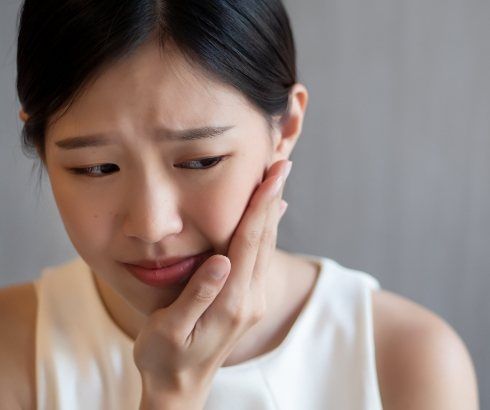
Back teeth are designed to absorb direct vertical pressures, but when they slide across each other, they experience lateral pressures, which is a trigger to grind food. And as these teeth constantly grind against each other, the muscles constantly work, and become tired, and this results in jaw pain and stiffness that will not just "go away.” Facial massages, relaxation techniques, and mouthguards may work to temporarily relieve pain, but they do nothing to address the cause of the pain. They can provide nothing more than just temporary relief of symptoms because none of them address these side-to-side tooth contact issues. You can treat the muscles with BOTOX, but eventually, the pain will return because it is the result of a reflex. To treat the problem, you have to remove the trigger of that problem, which is the reflex, and the removal of that trigger is what DTR (Disclusion Time Reduction) is all about.
How Treating TMJ Disorder Can Treat Teeth Grinding & Clenching
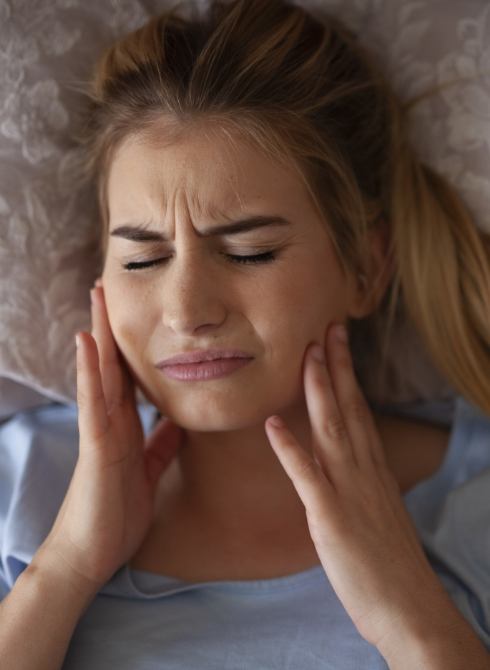
The long-term relief of TMJ problems begins with the discovery of the problem and ends with a precise bite. But you really need the accuracy that is only achievable with computers to guide the "fine-tuning." So, we use the computer bite analysis to guide our adjustments and confirm that the muscles are acting ideally, by directly observing the muscle activity via EMGs. Only when these two agree are we happy with your bite (but not as happy with it as you will be!). With our DTR therapy, we can see which teeth touch, in what order, how hard, and how they interact as you chew. We measure the muscles, confirm they work only when necessary, and relax all other times. This is vitally important information that you cannot get in any other manner.
Dr. Teasdale's information-rich approach, and our decades of occlusal experience, allow us to create the bite that Mother Nature intended for you, with the teeth, the muscles, the joints, and the smile all relaxed and comfortable, and all without the need for shots or impressions.
What Causes TMJ & Bite Problems?
Seldom are these kinds of issues due to genetics. Some may occur due to a relatively minor childhood accident that happened as the joints were developing. Others can originate from significant trauma at any age. A great many bite problems are caused by orthodontic treatment or by the loss of teeth, which results in a repositioning of the remaining teeth. Wisdom teeth can also move the nearby teeth out of position as well or create problems if they come in crooked.
Dental restorations are sometimes a major cause of TMJ issues because they are generally placed to restore a single tooth without considering the overall bite. Dental restorations may be placed over the course of several years by different dentists, with each slightly altering the bite of the patient. As a result, no one dentist looks at how the patient’s teeth come together.
Diagnosing Problems with the TMJ
At Evolution Dental, we rely on computerized data — confirmed with measurements of your muscle activity via EMG readings — to restore comfort and function to your jaw. It is science, yet it is treated the same almost everywhere as it has been, unsuccessfully, for decades and decades. Current popular methods are highly ineffective attempts to adjust the bite with only carbon paper, which is what virtually every dental office has done for the past century; it is now shown that such information is accurate only about 12% of the time. Most dental offices simply treat the symptoms of TMJ issues and try to mask the pain by short term mouthguards or pain medications. It is never good to treat symptoms. You need to address the causes, not the effects, for lasting, effective results.
To diagnose and understand how to treat issues in the TMJ, you need to see how things work in real life. Not on models of your teeth, but on actual real-time measurements of your bite. You need to see when the muscles work, and when they are at rest. You need to understand how everything interrelates. Only then can you begin to address the causes. We are the only Portland dental office accredited by the Center for Neural Occlusion to provide this service using this equipment and technique.
The Complexity of TMJ Problems
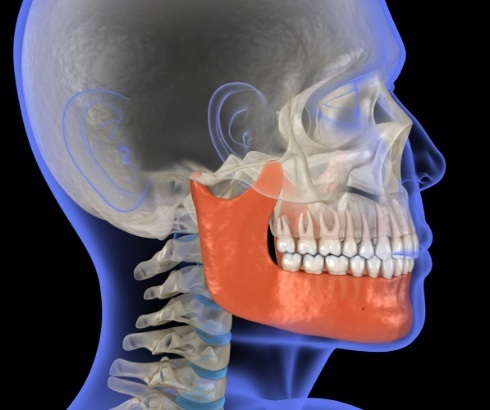
The mere fact that you are reading this likely means that either you or someone you know is suffering from temporomandibular joint (TMJ) problems. It is, after all, not a subject that has a wide audience of persons not directly affected by it. Perhaps you are looking to confirm your suspicions with a TMJ diagnosis in Portland, OR, to verify that jaw joint noises (popping and clicking), jaw locking, pain in the jaw, and pain in the side of the face are all related to TMJ dysfunction.
Physical deterioration of the joints can certainly lead to all the above-mentioned problems, but when you are only measuring subjective symptoms, you often get erroneous diagnoses. If you have a limp, for example, the cause can be anything from a postural problem to an incompetent toe joint to a bad hip or knee; it could even be a pebble in your shoe. It only makes sense to diagnose the situation objectively and comprehensively to minimize the risk of correcting the wrong problem.
Diagnosing TMJ Issues

Most dentists receive scant education in treating TMJ/TMD and limit their exams to a list of symptoms that are verified perhaps only by feeling the joint as the patient opens and closes their mouth. This may pick up popping and clicking, but provides little reliable information, other than that there is a problem in how smoothly the jaw opens and closes. To treat with such a diagnosis, without specific measurable goals, is to invite a compromised result.
The jaw joints are the most complex in the body and require a great deal of coordination between them. Neither side can operate independently of the other. They rely 100% on muscular coordination on each side of the midline of the body. The position of the teeth, how they hit, and when they hit are critical to directing joint movements. Furthermore, there is a thin and delicate disk of cartilage that needs to maintain its position throughout the movement of the jaw. This is not a mechanism that can be accurately “fine-tuned” bit by bit without direction and objective data.
Diagnosing TMJ Problems with a Sonogram

The first step in diagnosing the health of the TMJ is to run a very easy and completely non-invasive test that listens to the sounds of your jaw joints as it opens and closes. This objective and highly reproducible data gives us an accurate picture of how each component of each joint functions, how “out of sync” they may be, and at what stages in the open/close cycle any disturbances occur. Very simply, it lets us more accurately evaluate the ideal treatment for your very specific situation.
This exam is done via a set of headphones, but instead of delivering music to your ears, it listens to the sounds generated by your joints, as you simply open and close your mouth. It is quick, comfortable, completely non-invasive, incredibly accurate, and it provides us with essential information unavailable in any other manner.
Why is this important? It is important because the joints are the least directly correctable part of TMJ/TMD. You can adjust the bite (how the teeth interact), and through them, how the muscles react, but you cannot do anything to correct the internal physical deteriorations of the TMJs themselves without intricate surgeries. So, it is imperative to know the conditions of the joints before attempting anything else.
Please note that very few TMJ sufferers have joints that cannot be improved by refining how the teeth interact; current statistics show that fewer than 15% of TMJ sufferers are in this category. This quick screening enables us to be more candid and upfront with you by providing data unavailable by other means. Because, of course, no one wants to be frustrated with the results.
The Sonogram is so important in diagnosing TMJ that we use it with every patient, even during our initial consultations. The patient always deserves to know their true condition from the start, and there is no simpler, more accurate, or more comfortable way to determine this than through the sounds your jaw joints make when opening and closing. Treating TMJ/TMD can be a journey, and if you get off on the wrong path from the beginning, you will almost certainly wind up somewhere other than where you want to be.
Diagnosing TMJ Issues with Joint Vibration Analysis
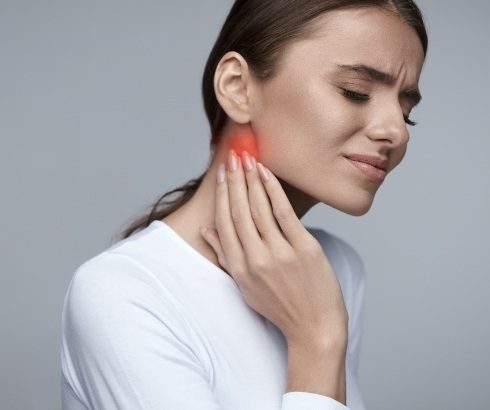
Joint Vibration Analysis (JVA) is a way to evaluate the health of the TMJ by listening to the sounds that it makes during a routine open/close cycle. As the condyle (end of the jawbone) moves against the disk, it makes a distinct sound, and this allows us to determine if there is a malfunction and how serious that malfunction is. It can also tell us if there is inflammation in the joint, which can be indicative of a mispositioning of the condyle.
Treating TMJ Problems with Disclusion Time Reduction Therapy (DTR)
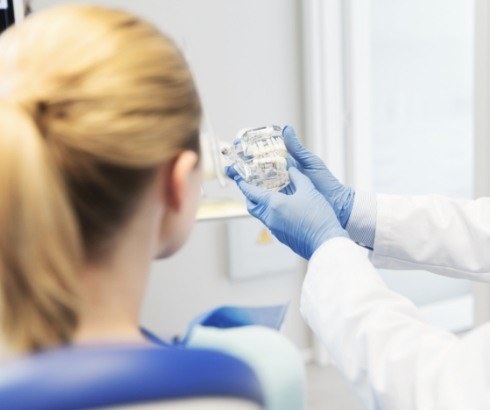
For patients suffering from TMJ-related pain, DTR (Disclusion Time Reduction) therapy offers the most reliable, effective, and long-lasting solution available today. Dr. Russ Teasdale is the first and foremost dentist in Portland trained and certified in DTR treatment. This method takes the guesswork out of TMJ therapy and uses a computerized system to identify the source of the dysfunction so it can be addressed directly, as opposed to just managing the symptoms, temporarily and ineffectively. If you are tired and frustrated because no doctor has been able to resolve your TMJ issue in a lasting way, DTR can help you achieve the happy, healthy, and pain-free life you deserve.
Learn More about Disclusion Time Reduction Therapy (DTR)
Treating TMD & Occlusal Disease with Equilibration/Occlusal Adjustments
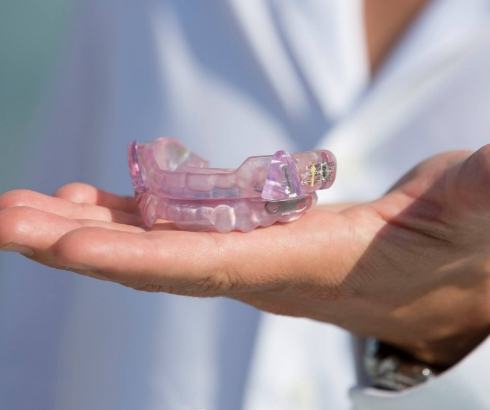
Sometimes, TMJ issues can be caused by your upper and lower teeth aligning incorrectly and putting pressure in places that strain your jaw muscles. A chronically bad bite may not seem extreme at first, but this health condition has ripple effects that can end up noticeably impacting your teeth, your muscles, your bone support, your posture, your digestion, your appearance, your sleep, and much more! At Evolution Dental, we evaluate for this condition with every patient because ignoring it comes at such a great cost. It is the big reason why teeth and restorations break, why TMJ/TMD pain occurs, why jaws appear off-center, and why teeth shift over time. Using a TekScan digital device, we can accurately pinpoint the source of your jaw pain and formulate an appropriate treatment plan to adjust your bite.
Learn More about Occlusal Disease
Treating TMD with Therapeutic BOTOX®

When you think of BOTOX, you likely think of its cosmetic uses, which include getting rid of fine lines and wrinkles on your face. But did you know that BOTOX can also be used to treat TMJ problems? This substance is commonly used to relax the muscles that cause wrinkles, but it can also be administered to your jaw muscles, forcing them to release tension which alleviates your jaw pain.
Learn More about Therapeutic BOTOX®
Treating TMD with Orthodontic Treatment
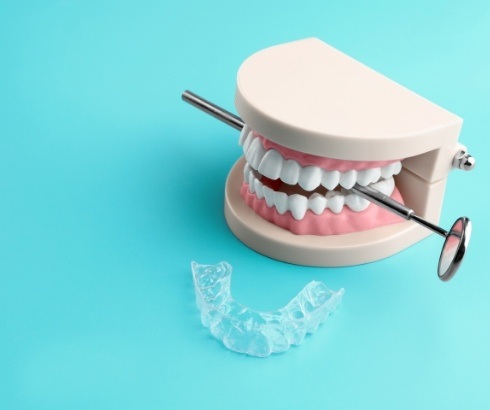
One solution to your TMJ problems could be to address your teeth’s alignment. At Evolution Dental, we provide two proven orthodontic treatments — traditional braces and clear aligners, like Invisalign. Depending on the severity of your teeth misalignment, you and Dr. Teasdale can determine which solution would best meet your needs. Plus, with supplemental treatments like Propel, AcceleDent, VPro5, and more, we can speed up your treatment to get your teeth into the proper alignment as quickly as possible.
At Evolution Dental, with the expertise of cosmetic dentistry care and with respect for the interconnection of the muscles, the TMJ, and the bite, our approach to comprehensive orthodontics is firmly founded in sound dental science that is augmented by decades of observation as well as the essentials of facial aesthetics.
We need to mention that we are solidly opposed to the extraction of otherwise healthy teeth to achieve an optimal esthetic and functional result with orthodontics. Instead of removing healthy teeth to create room in an underdeveloped arch, we strive to grow the arch so there is room enough for all the teeth to fit together naturally. Indeed, we are proud that we have never, in more than 30 years, extracted teeth simply to make the orthodontic treatment faster, because we know that such extractions will disproportionately lead to a lifetime of muscle and TMJ pain, multiple orthodontic treatments, and countless restorations and crowns.
Learn More about Orthodontic Treatment for TMJ Pain
Treating TMD with Myoaligner®
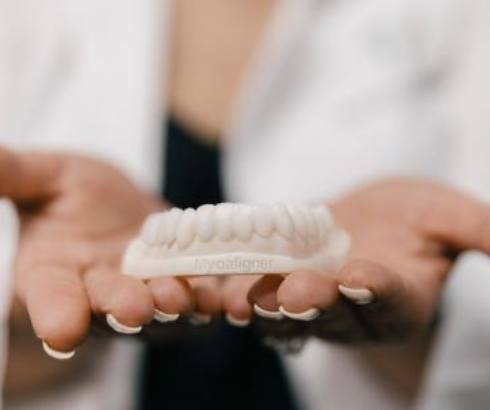
The lower jaw should rest in a certain position. If it sits too far back due to poor tooth positioning, it is described as “retracted.” Not only can this affect your facial profile, but it can also contribute to a slew of TMD symptoms.
If your lower jaw is not in its ideal position, Dr. Teasdale might recommend the use of the Myoaligner® system. It employs custom-made appliances that train the jaw to rest appropriately by recreating the contours and position of your teeth. Many patients notice relief immediately after beginning Myoaligner® therapy. It is also common for them to notice an improvement in their facial profile.
Myoaligner treatment is a modern application of a concept that has been established in neuromuscular dentistry for years. Older treatments that sought to reshape the teeth often involved expensive or intricate surgery. Myoaligner®, conversely, is entirely non-invasive and allows your natural teeth to remain intact.
Plus, MyoAligners are essentially invisible, non-invasive, and durable. Who could ask for anything more?
Frequently Asked Questions about TMJ Problems
To help our patients better understand the best course of care to relieve their jaw discomfort, here are some answers to a few of the most common questions regarding the treatment of TMJ and bite disorders:
How Does “How My Teeth Touch” Impact My Jaw and Bite Health?
If you have ever had a pebble in your shoe or a splinter in your finger, you know how a very small irritant can cause the other muscles to alter their normal routines. Your jaw is meant to move smoothly and with minimal resistance. Any “bumps” or restrictions cause the muscles to act less efficiently. They will try to either work around, power through, or wear away any obstacles that interfere with their normal operation. This can create a number of problems, including (but not limited to):
- Muscle pain in the head and neck
- Pain in the temporomandibular joints (TMJ)
- Popping, clicking, and the occasional full-locking of the TMJ
- Extreme sensitivity to cold water and temperature changes
- Broken teeth, veneers, crowns, or fillings
- Abfractures, or what used to be called “Toothbrush Abrasion”
- Migraine headaches
- Tightness in the face and head muscles
- Pain behind the eyes, temples, or the back of the head
- Bone loss around certain teeth
- Grinding and clenching, resulting in bruxism
- Sleep apnea (in some cases)
I Thought Braces Were Supposed to Improve My Bite?
Orthodontic treatment has a number of objectives. The eventual position of the teeth depends on what is possible within each patient’s mouth, the vision of the treating orthodontist or dentist, and the subjective opinions of esthetics and function. Unfortunately, how the teeth come and function together often receives minimal attention at the end of treatment when most patients are eager to have their braces removed. However, the bite remains key to the long-term success and comfort of any orthodontic treatment.
I Have Already Had My Bite Adjusted. Why Do It Again?
Essentially, every dentist will do some adjustment of the bite, but the questions always are: How did they determine what and where to adjust, and how did they measure it?
If the determination is made by biting on carbon paper, then it is inherently inaccurate. Studies have shown that even highly experienced dentists only correctly identify a bite problem less than 13% of the time. This type of success rate is hardly acceptable for any type of established diagnostic procedure. But, this is essentially how all dentists attempt to identify issues with the bite simply because this is the way it has always been done. Hardly a satisfactory justification!
With the use of computer analysis, we can more comprehensively and precisely evaluate a patient’s bite. This approach shows us where the teeth are hitting, in what order, and how hard. Throughout the chewing cycle, we have comprehensive information to work with that could not otherwise be ascertained. This analysis provides a highly accurate “movie” that clearly demonstrates the dynamics of how your specific bite functions. It is the difference between looking at a single still photograph of a dancer and watching a video of their entire routine.
What Is DTR?
DTR (Disclusion Time Reduction) is a method of preventing the back teeth from touching when the jaw slides side-to-side or front-to-back. When your back teeth rub against each other, they trigger muscles in the face to redirect the jaw away from these restrictions. Over time, these muscles tire and become sore and painful. Subconsciously, you may even begin grinding your teeth to erode or break off the offending point(s). This behavior will not only further exhaust the muscles, but it can also displace, break, or abrade your teeth. More importantly, it can cause permanent damage to the TMJ itself.
The key is to precisely fine-tune the bite so that your muscles function efficiently and comfortably, because when the muscles relax, so do you.
Is DTR the Same as Neuromuscular Dentistry?
While the two fields do share some similarities, they also have some very important differences. DTR and neuromuscular dentistry (NMD) both focus on relaxing muscles that control your bite, but DTR assigns primary importance to how the teeth interact, while NMD looks first at the muscles. Additionally, DTR adjusts the bite using real-time computer analysis while concurrently monitoring muscle activity. This allows the procedure to be done in a far shorter amount of time.
NMD promotes the long-term use of mouthguards while DTR does not require the use of such appliances. With DTR, there is no need for headgear or even models of your teeth as with NMD, because all adjustments are done with the patient using their normal, natural bite.
Will I Need to Wear a Splint or Mouthguard After DTR?
The usual purpose of mouthguards and splints (athletic protection and sleep apnea aside) is to maintain a space between the teeth so no grinding or clenching occurs. However, there are several logical and physiological reasons not to use them.
Oral appliances are only beneficial when worn, which is rarely for most people. Night appliances are only worn for between 6 to 8 hours. This still leaves the majority of the day where they do not, and cannot, work. Daytime appliances are generally too cumbersome to be worn routinely, so the benefits are likewise questionable. But, these obvious limitations still ignore some of the most important issues.
A mouthguard covers the biting surfaces of the teeth, thereby altering the bite. It may shield the teeth from direct contact, but it also creates a new bite, one that needs to be adjusted to make the muscles relax just like your natural bite. Additionally, it opens and holds your bite to at least the thickness of the appliance. Unless you have an unnaturally over-closed bite (due to tooth loss or orthodontics), this spacing can have a beneficial effect on the TMJ and the state of the rest of the muscles themselves. Conversely, if your bite is already within the normal range or is over-opened, then a mouthguard will likely stimulate the muscles to clench and grind, which only aggravate TMJ and muscle pain. That is why these appliances need periodic replacement: to compensate for what they have changed. It is a self-perpetuating problem.
One thing that mouthguards actually do is change the chewing patterns because the teeth now hit at different heights and angles, which alters how the muscles respond. The temporary relief people sometimes experience from such appliances is not so much due to the relaxation of the muscles, but rather because the muscle tension has been shifted somewhere else.
Obviously, if you do not clench or grind your teeth, there is no benefit or need for an appliance to control those issues. Muscles in tune with the bite are happy and relaxed muscles and have no incentive or purpose to become overly-tense. After DTR, the vast majority of patients report that they feel better and more relaxed and are told they no longer grind at night.
As a general rule, most mouthguards do far more damage than good.
I Just Had Veneers/Crowns Placed, and My Dentist Said I Need to Protect Them By Wearing a Mouthguard. Should I Get One?
Mouthguards are an insurance policy against the teeth and restorations chipping and breaking because of unconscious grinding, but that ceases to be a concern if the teeth come together properly and the bite is balanced. Mouthguards provide a false security, in that they primarily protect against breakage because the restorations were not placed with respect to how the bite works. Furthermore, mouthguards can ONLY have an effect when they are worn, and most chipping occurs when you are eating or talking, not when you are asleep. Most chipping and fracturing of teeth or restorations occur because of incidental excessive forces as you chew, and with DTR, these are not a concern. Rather, a mouthguard should only be used when participating in athletics where a sudden impact could cause oral injury or damage to restorations, or perhaps to open your bite to a more optimal physiologic comfort zone. When you come to Evolution Dental, Dr. Teasdale can examine your bite to make sure both your natural teeth and restorations are not at risk of incidental chipping due to a bite imbalance.
Can a TMJ Disorder Potentially Be Fatal?
Not directly, but a bite problem can contribute to issues that put someone’s ongoing health at risk. Chronic pain in the jaw and head might lead to depression and/or cause someone to alter their diet so it mostly includes less nutritious, easy-to-chew foods. These are typically highly processed and rich in sugar, meaning they contribute to obesity, diabetes, and heart disease. If the pain keeps someone from sleeping, sleep deprivation is also a leading contributor to motor vehicle accidents that is comparable to drunk driving.
How Long Does DTR Therapy Take?
When performed by a trained expert, DTR Therapy is a relatively quick process. Most of the work is done when analyzing the bite and muscles to determine the underlying causes of friction and tension. Once these are identified, correcting them is fairly straightforward. After the bite has been modified, many patients notice a difference almost immediately, but some may start to feel relief after a few days or weeks as their mouth and jaw adjust. Typically, the entire process takes two to three appointments, which includes the consultation, exam, bite modification, and follow-up.
Will Treating My TMJ Disorder Affect My Appearance?
In many cases, yes, and in a positive way! Constant teeth grinding and jaw clenching can cause the masseter muscles (the ones located on the side of the jaw that move when you chew) to become overly large and look out of proportion to the rest of the face. Once the problem has been fixed, these muscles will work less and relax, causing them to shrink to a more normal size, creating a more defined jawline. Also, TMJ issues can often stem from an overbite, underbite, crossbite, or open bite, and addressing these with orthodontics can improve the overall look of the smile and face at the same time.
Non-Extraction Orthodontics & Braces Sleep Apnea Therapy View Our Services
